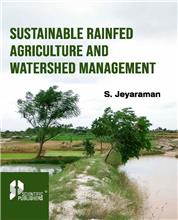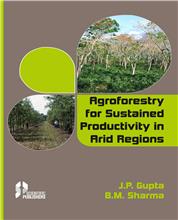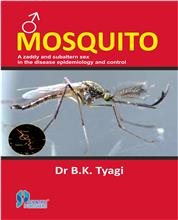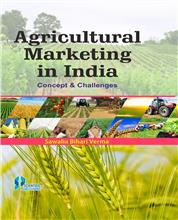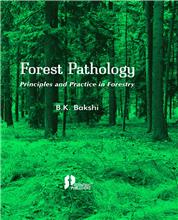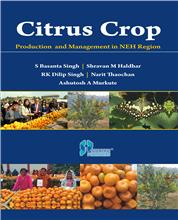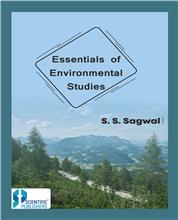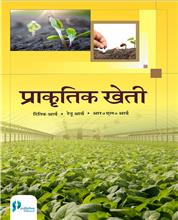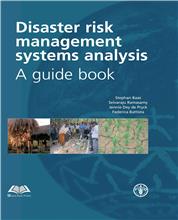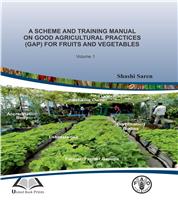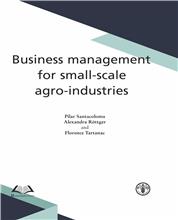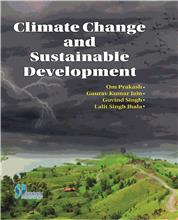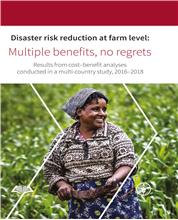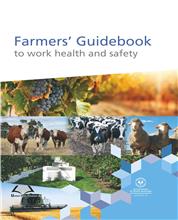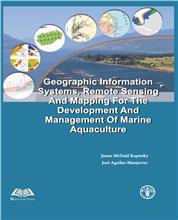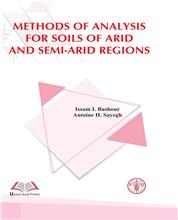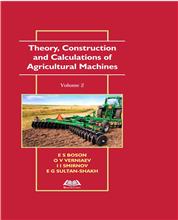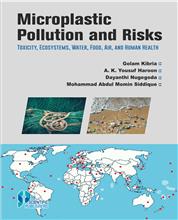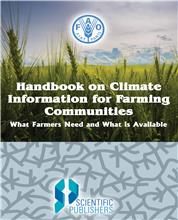1. DEGRADED LAND
1.1 Introduction
1.2 Definition
1.3 Classification
1.3.1 Cultivable wastelands
1.3.2 Uncultivable wastelands
1.3.3 Non-forest public degraded lands
1.3.4 Degraded forestlands
1.3.5 Private degraded lands
1.4 Extent and distribution
1.5 Need for harmonization of datasets of land degradation/wastelands
1.6 Causes and processes of land degradation
1.6.1 Natural causes
1.6.2 Direct causes of degradation
1.6.2.1 Deforestation and over cutting of vegetation
1.6.2.2 Shifting cultivation
1.6.2.3 Overgrazing
1.6.2.4 Non-adoption of soil and water conservation practices
1.6.2.5 Inappropriate agrotechniques
1.6.3 Underlying causes of degradation
1.7 Impacts of land degradation
1.7.1 The effects on production
1.7.2 The consequences for the people
2. POLICIES AND STRATEGIES FOR REHABILITATION AND UTILIZATION OF DEGRADED LANDS
2.1 Introduction
2.2 Policies/Programmes/Schemes for rehabilitation of degraded lands in India
2.3 Current programmes/schemes for development of degraded land
2.3.1 Schemes/Programmes of NRM Division
2.3.1.1 Central sector scheme (Plan & Non Plan)
2.3.1.1.1 SLUSI
2.3.1.1.2 SCTC-DVC (Non-Plan)
2.3.1.1.3 WDPSCA (Plan)
2.3.1.2 Centrally Sponsored Programme-(Plan - Subsumed under MMA)
2.3.1.2.1 RVP and FPR
2.3.1.2.2 RADAS
2.3.1.2.3 SLUB
2.3.2. Joint Forest Management (JFM) - Forest Management with involvement of local communities
2.3.3 Schemes/Programmes of RFS Division for development of degraded lands
2.3.3.1 National Watershed Development Project for Rainfed Areas
2.3.3.2 National Rainfed Area Authority
2.3.3.3 Rainfed Area Development Programme
2.4 Development of degraded lands and XI Plan
2.5 Appraisal of techniques for rehabilitation of degraded lands
2.5.1 Natural regeneration through protection
2.5.2 Accelerated natural regeneration
2.5.3 Enrichment planting
2.5.4 Plantations
2.5.5 Fire
2.5.6 Agroforestry and rehabilitation of degraded land
2.5.7 Watershed management with alternate land use
2.5.8 Amendments and agrotechniques
2.6 Suggestions
2.7 Conclusion
3. SILVIPASTURE
3.1 Introduction
3.2 Scope
3.3 Importance
3.3.1 Enhancing production and productivity
3.3.1.1 Forage production from pastures
3.3.1.2 Forage yield from trees
3.3.1.2.1 Species and age
3.3.1.2.2 Pruning intensity and initiation
3.3.1.2.3 Lopping intensity and initiation
3.3.1.3 Fuel wood/timber production
3.3.1.4 Total biomass production
3.3.2 Soil amelioration and fertility improvement
3.3.3 Soil and water conservation
3.3.4 Micro climate and environmental aspects
3.3.5 ECONOMICS
3.4 Silvipasture under specific problems
3.4.1 Silvipasture under drought condition
3.4.2 Silvipasture under water logged and swampy condition
3.4.3 Silvipasture under sloppy condition
3.4.4 Silvipasture under mine spoils and landslides
4 ESTABLISHMENT OF SILVIPASTORAL SYSTEMS
4.1 Introduction
4.2 Important steps before establishment of silvipasture
4.2.1 Protection of area from biotic interference
4.2.1.1 Live fencing
4.2.1.2 Physical fencing
4.2.1.3 Other fencings
4.2.2 Eradication of unwanted bushes
4.1.3 Soil and water conservation measures
4.3 Selection of pasture and tree components
4.4 Land preparation
4.5 Pitting
4.6 Manuring and fertilization
4.7 Pattern and planting of trees
4.8 Establishment of pasture component
4.8.1 Seed rate
4.8.2 Spacing and method of sowing
4.8.3 Time of sowing and pelleting
4.8.4 Depth of sowing
4.8.5 Seed mixtures
4.8.6 Fertilization
5 MANAGEMENT OF SILVIPASTORAL SYSTEMS
5.1 Introduction
5.2 Management of pasture components
5.2.1 Nutrient management
5.2.2 Introduction of legumes
5.2.3 Cutting management
5.2.4 Grazing management
5.2.5 Irrigation
5.2.6 Weed management
5.2.7 Reseeding and slashing
5.3 Management of tree components
5.3.1 Training and pruning
5.3.2 Lopping management
5.3.3 Nutrient management
5.3.4 Irrigation
5.3.5 Weeding, mulching and intercultural operations
5.3.6 Tree protection and care
5.4 Insect - pests and diseases management under silvipastoral systems
6 NATURAL SILVIPASTORAL COVERS OF INDIA
6.1 Introduction
6.2 Formation of silvipastures and grasslands
6.3 Methodology
6.4 Major natural silvipastoral covers of India
6.4.1 Ulmus-Grewia-Bauhinia-Alnus-Themeda-Arundinella Cover
6.4.2 Prosopis-Acacia-Zizyphus-Ailanthus-Dichanthium-Cenchrus-Lasiurus Cover
6.4.3 Anogeissus-Albizia-Hardwickia-Sehima-Dichanthium Cover
6.4.4 Acacia- Madhuca-Gmelina-Phragmites - Saccharum - Imperata Cover
6.5 Condition of natural forage resources and strategies for their restoration
7 TREE-PASTURE INTERACTIONS AND PASTURE STABILITY
7.1 Introduction
7.2 Tree – pasture interaction
7.2.1 Phases of tree-pasture interactions and factors affecting it
7.2.2 Types of tree-pasture interactions
7.2.3 Manifestation of tree- pasture interactions
7.2.4 Complementary effects
7.2.4.1 Increased production and productivity
7.2.4.2 Soil fertility improvement
7.2.4.3 Soil conservation
7.2.4.4 Nutrient cycling
7.2.4.5 Microclimate improvement
7.2.4.6 Sustainability
7.2.5 Inhibitory effects
7.2.5.1 Competition (reduction in crop yield)
7.2.5.2 Allelopathy
7.2.6 Management of tree-pasture interactions
7.2.7 Future thrust areas
7.3 Silvipastoral stability
8 LIVESTOCK PRODUCTION POTENTIAL FROM SILVIPASTORAL SYSTEMS
8.1 Introduction
8.2 Livestock production systems
8.2.1 Urban and peri-urban livestock production
8.2.2 Rural livestock production
8.2.3 Transhumant livestock production
8.3 Livestock production and silvipasture
8.3.1 Small ruminants
8.3.1.1 Performance
8.3.1.2 Growth rate and maintenance
8.3.1.3 Small ruminants under grazing versus stall feeding
8.3.1.4 Economics of small ruminants based silvipastoral system
8.3.2 Large ruminants
8.4 Nutritive value, palatability and digestibility of top feed
8.4.1 Nutritive value and digestibility
8.4.2 Palatability
8.5 Anti-quality factors in top feeds
9 LIVESTOCK PRODUCTION AND SILVIPASTURES IN CLIMATE CHANGE SCENARIO
9.1 Introduction
9.2 Contribution of livestock to climate change
9.2.1 Direct contribution
9.2.1.1 Enteric emissions through digestive process
9.2.1.2 Emissions from animal wastes
9.2.2 Indirect contribution
9.3 Impact of climate change on livestock production
9.3.1 Direct effects
9.3.2 Indirect effects
9.4 Silvipasture and climate change mitigation
9.5 Livestock production strategies for climate change adaptation and mitigation
9.5.1 Minimizing methane and nitrous oxide emissions
9.5.2 Animal production through silvipastures
9.5.3 Others
10 FUTURE THRUST AREAS IN DEGRADED LAND DEVELOPMENT AND SILVIPASTURE
10.1 Important issues
10.2 Important challenges
10.3 Future thrust
11 References
12 Glossary
Common Names of Important Forage Grasses, Legumes, Trees and Shrubs


